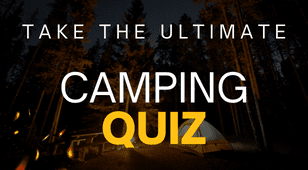Watching a fire show, you get enchanted by the radiant glow of the flames and how it would remain glimmering in mesmerizing patterns, even during the harshest wind. That is the stunning supremacy of white gas.
It’s also a big hit as a source of fuel for fire dancers, fire eaters, and avid campers alike. This is because of its unmatched ability to burn fast, hot, and extremely bright.
It creates little to no smoke pollution and is more wind resistant than paraffin. White gas is ideal for lighting a camping stove and shines an intense warm light when used as lantern fuel. However, like any fuel, it can be precarious.
What Is White Gas?
In room temperature, it is a colorless liquid that is derived from petroleum. It stands apart from other petroleum products due to the fact that it doesn’t contain additives or impurities. It is made up of 100% light hydrotreated distillate, with the ‘white’ part of its name alluding to its purity.
It’s safer to go camping with white gas because it will not manifest itself in your lunch or dinner. The lack of additional poisons and toxins makes it environmentally conscious. It can be found at your local camping store or Walmart in portable containers that make white gas easy to transport and store.
Does white gas have other names?
Historically, it appeared around the 1950s as fuel for early powered lawnmowers and some cars. It is a short form for ‘white gasoline’. It also goes by the name Naphtha, which refers to the ancient reference for any liquid petroleum fuel, although this is a different formula from the ‘Naptha’ used in paint varnish. Chemically, it refers to a group of Hydrocarbon liquids.
White gas is principally produced by the famous outdoor camping gear designers, Coleman. Their fame led to white gas being referred to as Coleman Campfire Fuel, or simply just Coleman throughout the US.
How Does White Gas Work on A Camping Stove?
White gas is used in liquid-based camping burners and outdoor fuel stoves.
Pour the liquid in the stove’s fuel tank, then use the pump to generate pressure. A valve will then release the fuel line to flow into the burner. The fuel then needs to be heated by burning alcohol, thus converting the liquid into gas. This is called priming. Using the lighting lever, adjust the valve until the flame turns blue. This is an indicator that the gaseous fuel and air have combusted well, and your stove is ready for use.
It takes some practice to get a white gas stove going, but once it is on, you are good to go.
Why Is White Gas Favored by Campers and Hikers?
White gas is a clean gas
It contains no impurities and is colorless and odorless owing to the fact that it doesn’t contain additives or poisonous gasses.
It reduces gumming on camping stoves
When cleaning your stove, do you sometimes find clogged dirt on the fuel line? This is referred to as gummy. A fuel like kerosene is a perfect example of a petroleum product that causes gumming. This grime is dangerous because it can increase the risk of your stove exploding on you! White gas is resistant to gumming, making cleaning up after your camping trip an effortless process.
Lanterns burn brighter with white gas
Truth be told, it can get creepy-dark when camping at night. Having a liquid lantern burning on this gas will illuminate your campsite with minimal environmental impact. Its purity means it produces no smoke, smell, or soot that can stain your lantern. This tends to happen a lot with kerosene, diesel, and unleaded fuel.
A lantern on white gas doubles as a great source of warmth. It is also a safer option for a high energy-producing fuel that burns hotter than propane. Your lantern can keep you warm in your tent on a cold, rainy night in the woods.
Can easily spark in any weather or altitude
A wood-burning stove is great for summer camping, however, it may not be as easy to light and keep going during the winter. White gas, on the other hand, is an impressive performer as fuel for any weather. It lights up well in extremely high or below freezing temperatures. It’s the hat-trick you need up your sleeve when you want to easily ignite a stove on a cliff edge at the peaks of Mt. Everest.
Follows the ‘every ounce counts’ rule
White gas is available in a one-liter fuel bottle that can hang perfectly on the side of a backpack. There is also the one-gallon canister that is light and can fit snugly amongst your camping equipment. It is not as flammable as gasoline, making it easier to store and transport.
White gas is easy to find
Most camping stores will have a good supply – you can also find it at your local Walmart or Kmart. It is relatively inexpensive and boasts an amazing shelf life compared to gasoline. There are whispers that it can last up to 10 years in its original container.
Food tastes better when cooked with white gas
The smell of fish roasting over a wood-fired stove is by far one of the best flavors you can enjoy while camping. Some stoves, however, can interfere with the taste and aroma of your meals. Paraffin and Kerosene have impurities that will affect the smell and flavor of every meal you prepare. White gas has no effect on your campfire cuisine because of its purity.
Is white gas dangerous?
Like most things in life, yes, it is dangerous if it is mishandled.
White gas can be volatile
It is highly flammable and the smallest leak next to an open flame can lead to accidental explosions. The fact that it is odorless and colorless makes it difficult to know if it is leaking. As an extra precaution, it is advisable to regularly inspect bottles for any spills and leaks.
Safety should be your number one priority
Always be safe when handling any type of fuel. Try and keep your skin protected from direct contact with white gas. It has been known to cause skin irritations and swelling.
In areas experiencing extremely low temperatures, avoid spilling it on your skin. It can evaporate even at temperatures below the freezing point of water. So, when in icy conditions, ensure that it doesn’t come into contact with your skin. It can later evaporate causing frostbite.
Final Thoughts
White gas is in liquid form at room temperature and needs to evaporate into gas to ignite. It has a great advantage over other camping fuels for its purity and performance. Then again, it can be dangerous. Being odorless and colorless, it can seep through a leak, and the slightest contact with an open flame can cause chaos. Safety precautions should be followed at all times when handling it.
- Hammock Benefits: What The Tent Industry Doesn’t Want You Knowing - November 19, 2022
- How I Maintain My Hygiene When Camping - November 19, 2022
- How to Survive a Meet & Greet with a Bear - November 18, 2022






